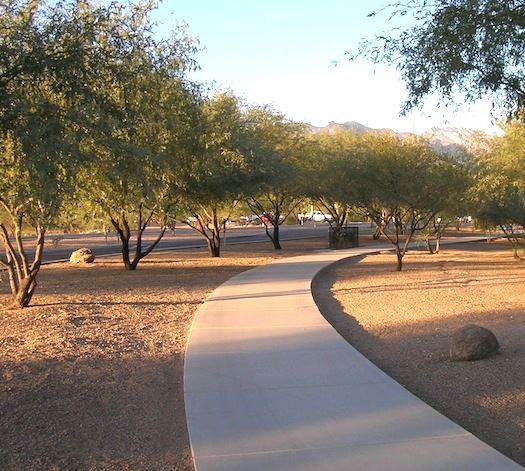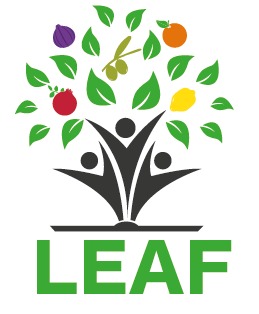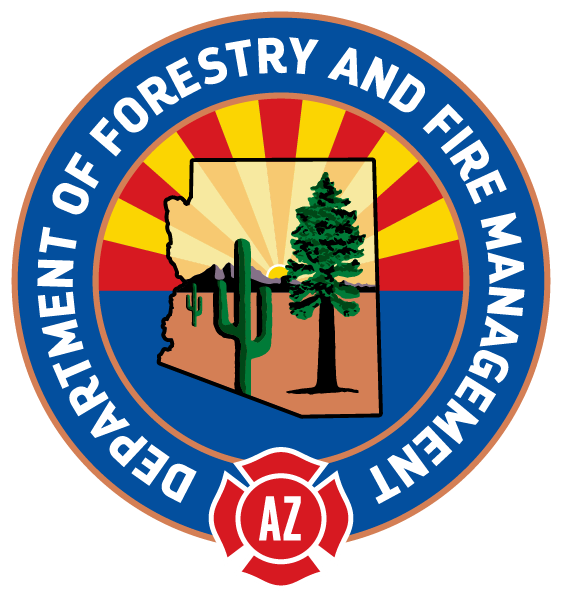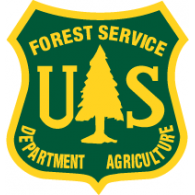Tree Spacing Click Here for a PDF of Tree SpacingConsider tree spacing long before you plant. In addition to the site considerations discussed in earlier sections, pay special attention to utilities; distance from buildings, walls and curbs; access to trees; pollination distance; mature tree sizes; and the potential for multistory plantings, as discussed below. Utilities. Do not place trees where planting, care and harvesting could be a safety hazard—such as under overhead utility lines or over buried utility lines, see CHOOSE - Site Conditions. Hazards could include hand shovels and machinery piercing underground electric, gas, water, sewer or communications lines. Tree roots could grow into pipes and clog them. Tree branches could grow into overhead electric lines and present a fire and electrocution hazard. Buildings, streets, slabs and curbs. Place trees far enough away from buildings, walls, street, concrete slabs and curbs so roots do not grow into foundations or crack curbs, roads or slabs. Do not plant trees where they could block traffic signs or vehicle visibility. To minimize wildfire danger and damage to roofs, tree canopies should not overhang roofs or be planted right next to buildings, see CHOOSE - Wildfire. Avoid putting trees against shared walls, since part of the tree will overhang the neighbor’s yard, roots could impact wall foundations and trees will be difficult to maintain. Access. In site design, lay out pathways to and around trees. You may need to plan for access into the site for vehicles or machinery used for maintenance or new construction. Trees can be placed in clusters, with wider access ways between them for wheelbarrows, mowers, vehicles or other machinery. Pollination. Many trees need cross-pollination to produce fruit, nuts, berries, seeds or pods. Fruit trees that require cross-pollination by honeybees should be within 100 feet of one another, but can be planted much closer. Plant wind-pollinated tree species within 50 feet of one another to ensure good pollination. | During the design phase of your food forest, public site or backyard area, plan ahead:
In a public park, well-spaced native edible trees are accessed by a raised sidewalk that provides rainwater runoff to the adjacent trees. |
Trees Sizes. To provide sufficient space for trees to grow, imagine fully grown trees when planning tree spacing. To ensure that mature branches will have adequate sunlight, water, and nutrients, plant full-sized trees at least 30 feet apart. In some cases, full-sized trees can be pruned or trained to fit smaller spaces. Semi-dwarf and dwarf trees require less space and less water when they are full grown than standard trees. These trees can be planted closer together than standard-sized trees, increasing the number of trees in a given space while leaving room for tree care and harvesting. Some dwarf trees may also be grown in containers. Choose trees whose stature and size matches the space you have, and place them thoughtfully within the available space. To help determine the species, number and spacing of trees for your site, you can prepare a site map and draw circles to represent mature tree canopy diameters. The table Canopy Diameter and Height of Selected Edible Trees provides size ranges for common edible trees. The Edible Tree Directory provides sizes of additional trees and shrubs. For more information on trees sizes in general see LEARN - Tree Sizes. |
|
Multistory planting Tall trees provide shade, higher humidity and frost protection for smaller plants beneath them. Native mesquite, palo verde and ironwood trees add beneficial nitrogen to the soil, increasing organic matter and soil nutrients. Planting a diverse mix of species mimics the natural environment and will create a healthy forest over the long term. In multistory plantings, determine appropriate tree spacing first, then place shrubs, herbs, cacti, succulents and vines in between the trees to create an open, structurally diverse environment that people can comfortably access for care and harvesting. Information about edible understory plants suitable for different elevation areas in Arizona are described in the Edible Understory Plant Directory, located at the Edible Tree Directory. Each plant needs water, sunlight and nutrients. If plants are too close together they will compete for these resources and fail to thrive. If they are too far apart they might not have the benefits created by the microclimates of the taller species, such as shade, frost protection and soil improvements. Note that some edible trees such as juniper and pine can have components in their roots or fallen needles that do not combine well with understory species. Selecting more that one kind of fruit—or different varieties of the same fruit—to plant within a multistory landscape can extend the ripening season for several months. See the Harvest Table and the Edible Tree Directory to select edible trees for your Arizona region that ripen in different months. For example, Anna or Carolina red June apples will mature in early summer, while later winter apples such as Arkansas black ripen in October and can be harvested until December. As you select your tree types and varieties, talk with neighbors, local nurseries, Cooperative Extension agents and other professionals to learn about the varieties that will thrive in your area and their tree-spacing needs. |
Chiltepin, wolfberry and desert hackberry shrubs are understory plants that produce edible fruits that benefit both people and wildlife.
|
CAUTION: Never eat anything that is not properly identified. It is your responsibility to ensure that all fruits, nuts, seeds, pods and other edible products of trees and shrubs are correctly identified and safe to eat before eating them or serving them to others.
Copyright 2023
LEAF is under the fiduciary stewardship of the Arizona Community Tree Council, a 501(c)3 non-profit organization.
70 S Val Vista Drive, Suite A3-186, Gilbert, AZ 85296


.jpg)


